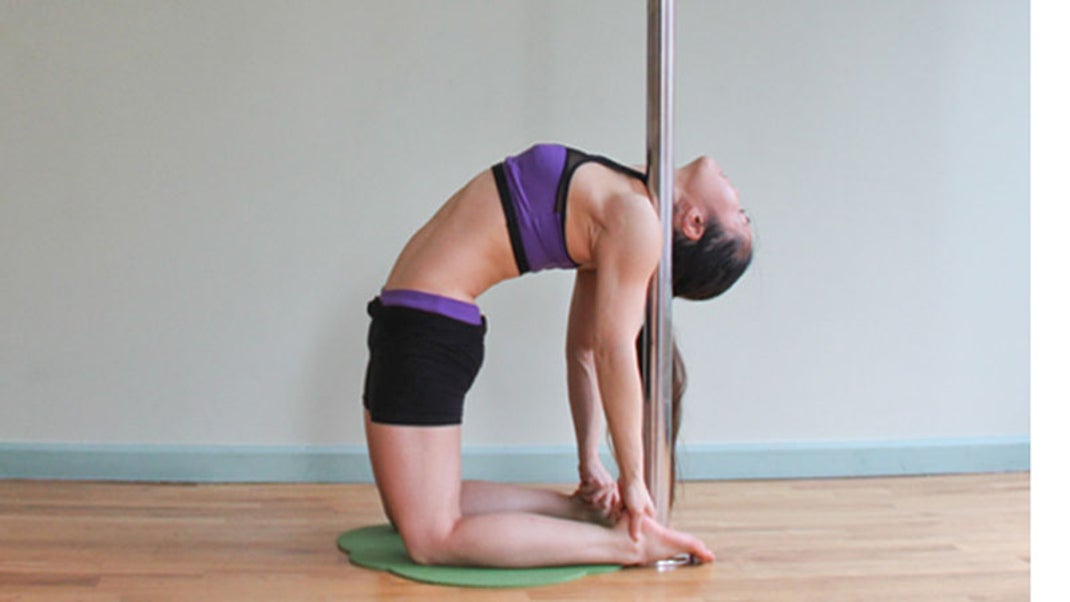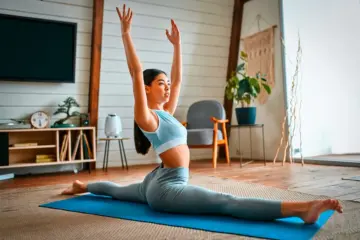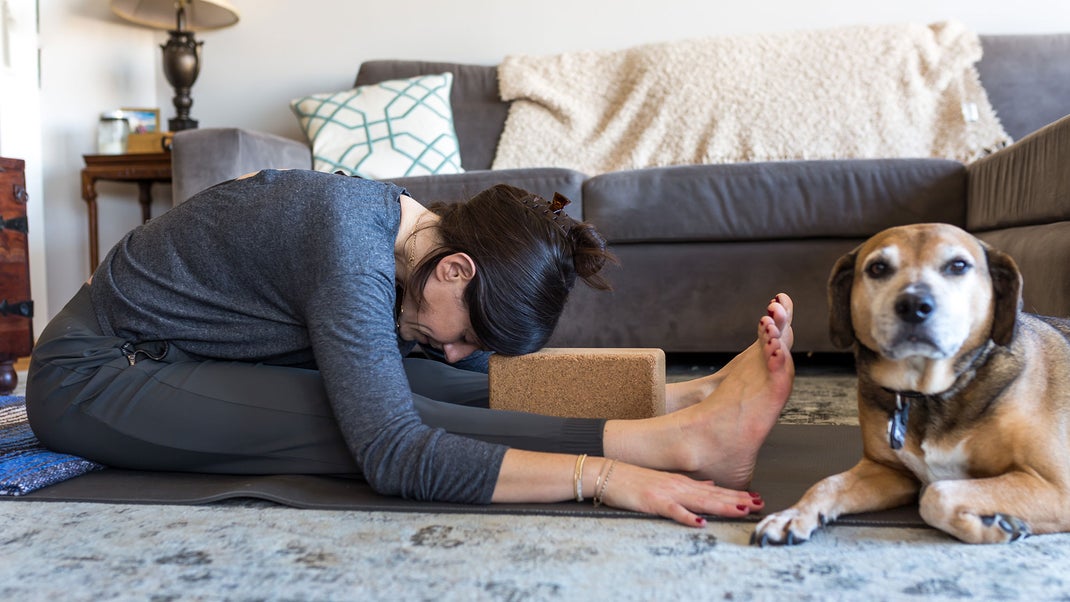Yoga-Pole Hybrid Sequence is a Yoga practice that combines the physical and mental benefits of Yoga with the fun and excitement of Pole Dancing. This unique Yoga-Pole Hybrid sequence uses both poles for stability, balance, and to add an extra challenge to your workout!
If you’re looking for a new Yoga practice or just want to try something different than traditional Yoga, then this could be just what you need.
This latest hybrid yoga style won’t teach you how to spin upside down around a dancer’s pole or do Warrior III in 5-inch heels. What it will do is build strength and improve flexibility through meditative movement, says former gymnast-turned-yoga teacher Carolyn Chiu, who combines martial arts and Iyengar Yoga in her classes at Yoga Pole Studio in Brooklyn.
“The pole helps encourage students to control their stretches while teaching them to push physical and mental limits,” says Chiu. “Utilizing the pole also creates a safe, effective method of teaching inversions, and it’s more fun and exciting.”
PROPS NEEDED A pole or a tree. Hold each pose for 2 breaths, working your way up to 8. Repeat 3 times on each side.
Child’s Pose (Balasana)
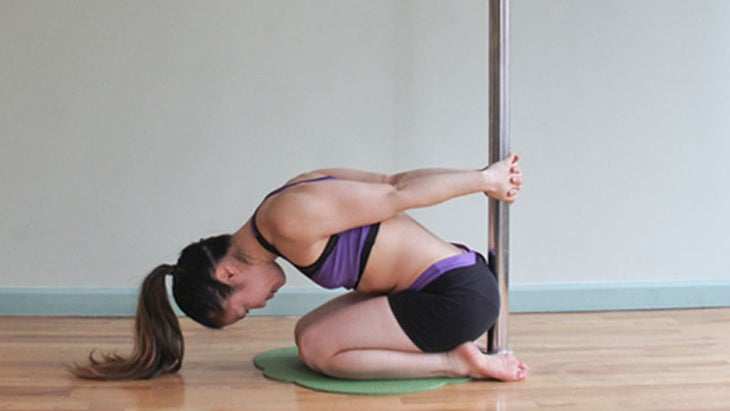
Kneel on the floor. Touch your big toes together and sit on your heels, then separate your knees about as wide as your hips. Reach back for the pole using a cup grip, moving the head and chest forward. Relax your neck.
The Pole Payoff: “The hands ground you when you reach behind your back and grab the pole, while the head and chest move forward, creating more space between the neck and the shoulders,” Chiu says. The pose also releases stress and tension in your neck, hips, and lower back, she adds.
Camel Pose (Ustrasana)
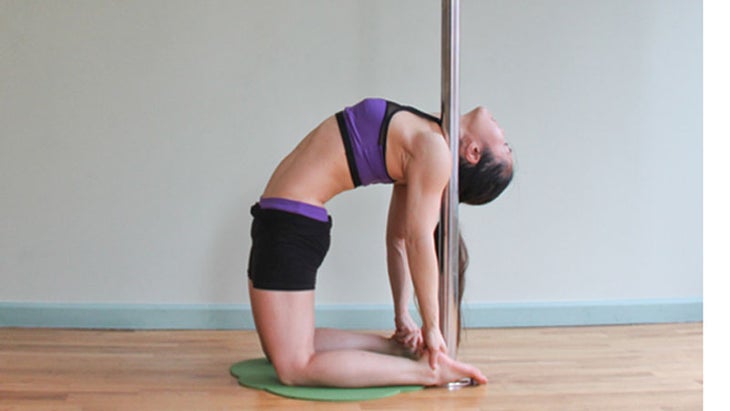
Kneel on the floor with your knees hip-width apart and thighs perpendicular to the floor. Rotate your thighs inward and firm your buttocks. Keep your outer hips as soft as possible, pressing your shins and the tops of your feet firmly into the floor.
Rest your hands on the back of your pelvis, with the base of your palms on the top of the buttocks, fingers pointing down. Lengthen down through your tailbone and firm the tailbone toward your pubis. Now lean back with your head up, chin near the chest, and hands touching your feet. Lining your shoulder above your ankle, use the pole to help support the inside shoulder.
The Pole Payoff: “The pole provides support for your shoulder to lean on, enhancing the stretch across the chest muscles. The pole also aligns the shoulder above the foot, providing proper alignment,” Chiu says.
High Lunge, Crescent Variation
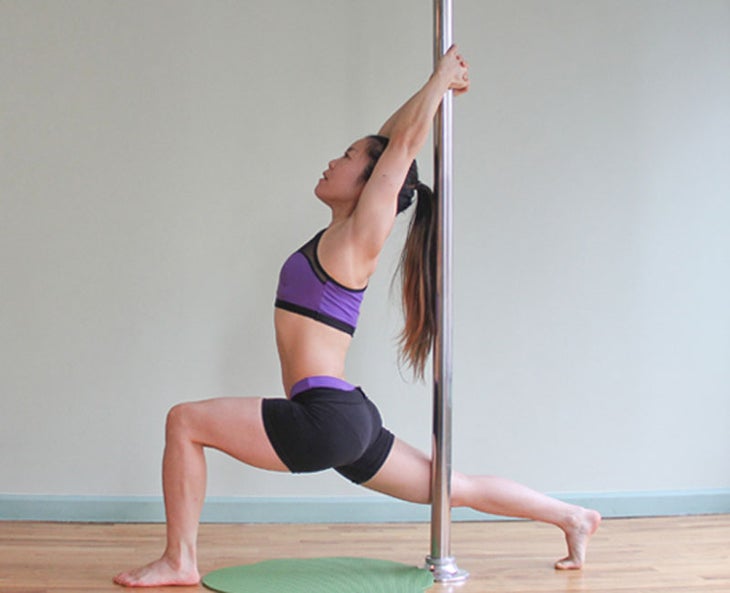
Start in Downward-Facing Dog, then exhale and step your left foot forward between your hands, keeping your knee directly over your heel. Use the pole to provide support for your knee or thigh by leaning your thigh or knee against the pole. Inhale and raise your torso upright. At the same time, sweep your arms wide to the sides, then raise them overhead, grabbing onto the pole to deepen the pose.
The Pole Payoff: “The pole provides support for the knee or thigh to lean against while the hands reach overhead and grab the pole,” allowing a deeper stretch, Chiu says.
Downward-Facing Dog (Adho Mukha Svanasana)
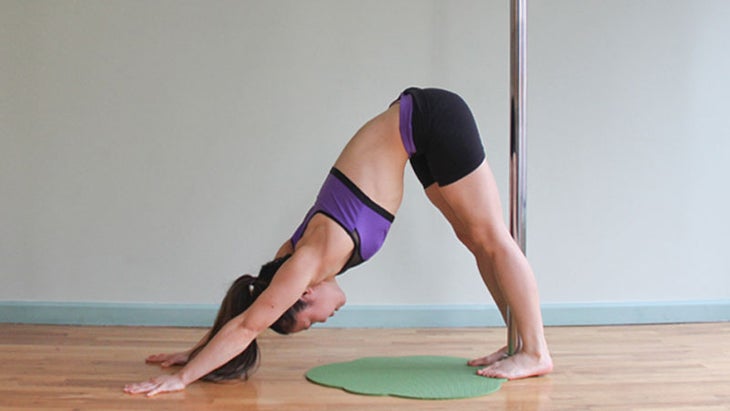 Come onto your hands and knees on the floor with the pole between your feet. Your knees should be directly below your hips and your hands slightly in front of your shoulders. Spread your palms and turn your toes under.
Come onto your hands and knees on the floor with the pole between your feet. Your knees should be directly below your hips and your hands slightly in front of your shoulders. Spread your palms and turn your toes under.
Exhale, lifting the knees away from the floor, keeping the knees slightly bent and the heels lifted away from the floor. Lengthen your tailbone, lifting the sit bones toward the ceiling. Push your thighs back and stretch your heels down toward the floor, wrapping your feet around the pole.
The Pole Payoff: “Wrapping your feet around the bottom of the pole helps you establish a grounding sense,” Chiu says.
Three-Legged Dog
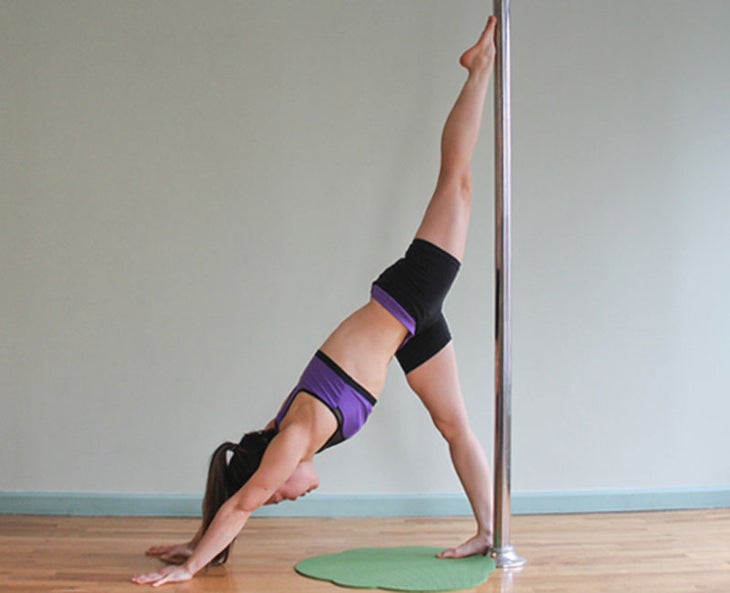 Remain in Downward-Facing Dog, lifting your left leg into the air while keeping your hips level, heel reaching back and toes pointing down toward the ground. Place the top of your ankle on the pole for extra support at your highest point.
Remain in Downward-Facing Dog, lifting your left leg into the air while keeping your hips level, heel reaching back and toes pointing down toward the ground. Place the top of your ankle on the pole for extra support at your highest point.
The Pole Payoff: “The base of the pole is a marker for foot placement. As you raise one leg and place the top of your ankle on the pole at the maximum height between the bottom foot and top foot, the pole provides support for holding this challenging position. The pole also guides the top foot to move directly above your center of gravity,” Chiu says.
Warrior III (Virabhadrasana III)
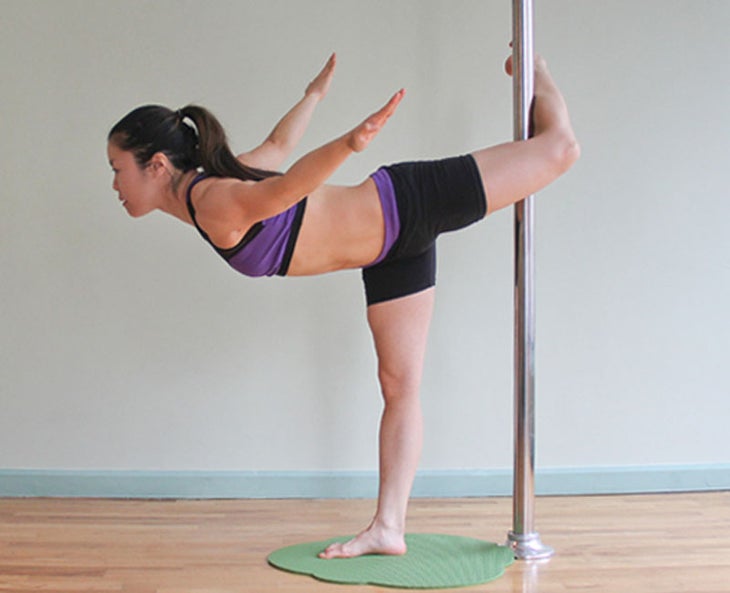
From Three-Legged Dog, place the left leg back on the floor in front of your standing leg. As you lift your left leg again to come into Warrior III, the standing foot remains slightly in front of the pole while your left knee wraps around the pole with your shoulders square to the front and your arms and hands lifting up and out to the sides.
The Pole Payoff: “As the knee wraps the pole, you lean your torso forward to practice engaging the thighs, buttocks, and back,” Chiu says.
Lord of the Dance Pose (Natarajasana)
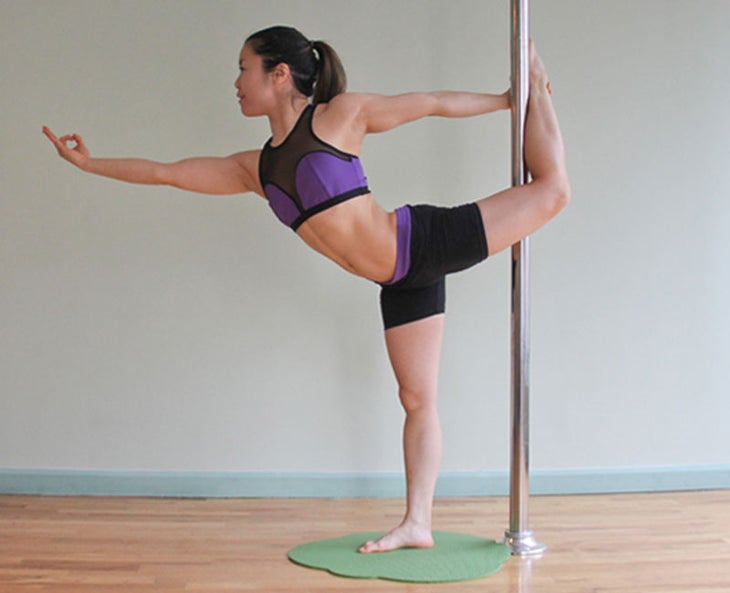
From Warrior III, press your right thigh bone back and pull the knee up to keep the standing leg straight and grounding into the floor. Keeping your torso upright, reach back grabbing onto the pole with your left hand for support. Then reach back with your left leg and wrap your knee, calf, and ankle around the pole.
The Pole Payoff: “By wrapping the knee, calf, and ankle around the pole, you can experience learning to stand on one foot by raising your foot straight up while squaring the hips and shoulders to the front,” Chiu says.
Conclusion:
Yoga is an efficient way to build strength, increase flexibility and lose weight while improving your mind-body connection. Yoga has become one of the most popular forms of exercise because it’s a complete fitness system that provides physical benefits for both men and women at all levels.
